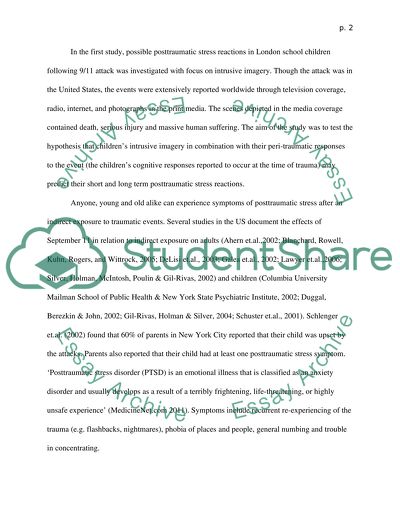Cite this document
(Peri-Traumatic Reactions and Intrusive Imagery Essay Example | Topics and Well Written Essays - 2000 words, n.d.)
Peri-Traumatic Reactions and Intrusive Imagery Essay Example | Topics and Well Written Essays - 2000 words. https://studentshare.org/environmental-studies/1411052-peri-traumatic-reactions-and-intrusive-imagery
Peri-Traumatic Reactions and Intrusive Imagery Essay Example | Topics and Well Written Essays - 2000 words. https://studentshare.org/environmental-studies/1411052-peri-traumatic-reactions-and-intrusive-imagery
(Peri-Traumatic Reactions and Intrusive Imagery Essay Example | Topics and Well Written Essays - 2000 Words)
Peri-Traumatic Reactions and Intrusive Imagery Essay Example | Topics and Well Written Essays - 2000 Words. https://studentshare.org/environmental-studies/1411052-peri-traumatic-reactions-and-intrusive-imagery.
Peri-Traumatic Reactions and Intrusive Imagery Essay Example | Topics and Well Written Essays - 2000 Words. https://studentshare.org/environmental-studies/1411052-peri-traumatic-reactions-and-intrusive-imagery.
“Peri-Traumatic Reactions and Intrusive Imagery Essay Example | Topics and Well Written Essays - 2000 Words”. https://studentshare.org/environmental-studies/1411052-peri-traumatic-reactions-and-intrusive-imagery.


